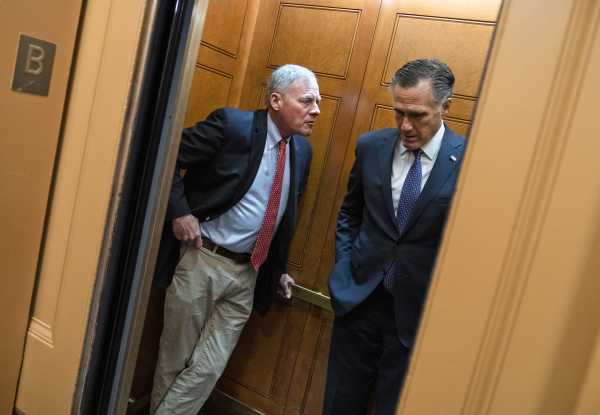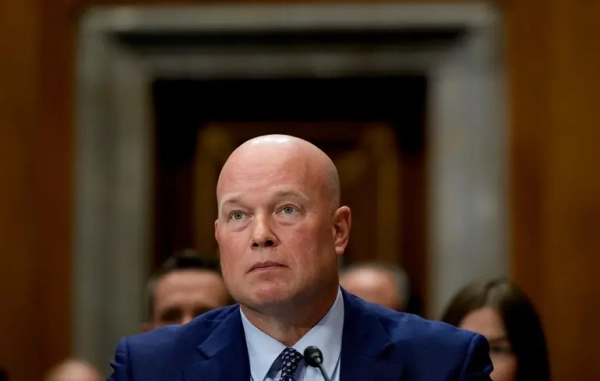
As the ink dries on the Inflation Reduction Act — the landmark federal law that tackles climate change, drug pricing, health insurance, and tax enforcement — advocates for the expanded child tax credit have been quietly mourning their loss.
The expansion, passed as part of President Joe Biden’s pandemic relief program, delivered hundreds of dollars into parents’ bank accounts every month in 2021, ultimately helping 65 million children and keeping 3.7 million of them out of poverty. A year ago, the expanded CTC was heralded as one of the most significant policy achievements of the Biden era, so important to the broader Build Back Better negotiations that House Speaker Nancy Pelosi described its upcoming expiration as “really important leverage” for getting the rest of their agenda through.
It wasn’t enough. By January 2022, it was clear that any attempt to pass Biden’s agenda would likely exclude the child tax credit due to irreconcilable differences between West Virginia Sen. Joe Manchin and his Democratic colleagues over whether tax credit recipients should be required to work. When the Inflation Reduction Act passed last month, it didn’t include the CTC.
Now advocates for the CTC say they’re looking ahead to next steps. The first opportunity for new legislation could come at the end of the year, when Congress negotiates extensions on expiring business tax breaks. Advocates are also looking at new administrative solutions at the IRS, and thinking more seriously about state-level reform, amid state budget surpluses and new research detailing just how much families benefited from the now-expired expanded federal credit.
“It was very unfortunate that we didn’t get the expansion that we wanted in reconciliation, but it still is a very live issue,” said Brayan Rosa-Rodríguez, a senior policy analyst at UnidosUS, a national Latino advocacy group. “We’re going to focus on it over the next couple months to see if we can get it included in a tax extender bill.”
During the past year, as inflation wreaked havoc on bank accounts and eroded the value of existing family benefits, lawmakers have faced pressure to offer relief. In the wake of the Supreme Court overturning Roe v. Wade, conservatives have also been facing more pressure to support families, and a proposal introduced in June by Republican Sens. Mitt Romney (UT), Richard Burr (NC), and Steve Daines (MT) to distribute monthly cash payments to parents has garnered a lot of attention. Notably, this Republican proposal includes a requirement that families earn at least $10,000 to receive its full benefit, the kind of work requirement progressives rejected during reconciliation. Virtually every Republican has said that some “connection to work” is essential for any family policy they’d vote for.

To reach a bipartisan deal at the end of the year, advocates recognize they will have to entertain terms they rejected with Manchin.
“It’s obviously easier to get to 50 votes than it is to get to 60 votes, and that’s what it is,” said Zach Tilly, a policy associate with the Children’s Defense Fund, which co-led a coalition that pushed for the expanded CTC. “I think the way we’re looking at this opportunity at the end of the year is basically just as one where we may still have some leverage to get something done.”
Progressives are looking to an end-of-the-year compromise
Romney’s new child tax credit proposal — the Family Security Act 2.0 — is a modified version of a child allowance policy he introduced in 2021. One of the major differences between the two proposals is that the new one has a work requirement, something his Republican colleagues demand and which Manchin demanded last year during reconciliation.
The FSA 2.0 would increase the maximum annual child tax credit from $2,000 to $4,200 for each child under age 6 and $3,000 for each child ages 6 through 17, paid out in monthly installments. Expecting parents could also qualify for an additional $2,800 credit during the final four months of pregnancy. The “phase-in” of Romney’s plan — meaning the time at which families could start receiving their benefit — is much faster compared to the status quo. Right now the first $2,500 of earnings does not count toward CTC eligibility, while Romney’s plan would phase in the credit beginning with a family’s first earned dollar. This expansion would all be financed by consolidating other tax benefits, including a significant revamp of the earned income tax credit.
The left-leaning Center on Budget and Policy Priorities estimates that the number of children living in poverty would decline by 1.3 million under the Romney proposal, and that roughly 20 million children in families making less than $50,000 would be better off. But the CBPP also argues that roughly 10 million children would be worse off under the Romney plan, due in part to its proposed cuts to the EITC and its elimination of the “head of household” tax filing status, which millions of single parents use when they file their income tax returns.
The Niskanen Center, a centrist think tank that helped Romney craft his new proposal, pushed back on the CBPP’s analysis and defended the elimination of the “head of household” filing option, something conservatives have long argued disincentivizes marriage by imposing financial penalties on couples who tie the knot.
Niskanen agreed some families would be worse off, but said some of CBPP’s concerns could be addressed by increasing the phase-in and phase-out rate of the Romney proposal, to account for inflation. Niskanen also said the CBPP understates the benefit of making tax refunds administratively simpler for both recipients and the government.
As recently as this spring, progressive tax wonks and the Biden administration told Democrats in Congress that they should not consider any possible work requirement for expanding the child tax credit in reconciliation. But left-leaning groups are now acknowledging a compromise on this will likely be needed.
The Family Security Act doesn’t include any of the more politically popular exceptions to work requirements, such as exempting families with very young children, or families where the primary caregiver is disabled, elderly, or a student.
“If policymakers move toward a compromise on a Child Tax Credit expansion, the highest priority should be to make the credit fully refundable,” the CBPP said, meaning eligible to all regardless of whether they’re earning a certain amount of income. “But if that isn’t politically possible,” the CBPP concedes, “and an earnings requirement is included, important exemptions should be included as well.”

Writing earlier this month in The Hill, University of California Berkeley public policy professor Bruce Fuller urged Biden to step up and find a compromise with Romney, such as a work requirement that starts when children enter school. “Romney’s bid has drawn deafening silence from the White House and leading Democrats,” Fuller wrote.
Josh McCabe, a family policy analyst at the Niskanen Center, thinks most advocacy groups were waiting for reconciliation negotiations to finally be over and are now starting new discussions. “I think people are more open to things that they weren’t before, and everyone’s feeling out what’s possible,” he told Vox. “So with the FSA 2.0 there’s a more generous phase-in, which is unattractive relative to the fully refundable CTC from 2021, but it’s very attractive relative to the status quo.”
Tilly, of the Children’s Defense Fund, acknowledged that it will take 60 votes to get anything done on the child tax credit at the end of the year. “So that limits what’s possible,” he said, though he emphasized that advocates have some leverage, as they recognize it will be politically difficult for Republicans to extend federal business tax cuts without offering any economic relief to families. An open letter published in March from 133 economists also made the case that an expanded CTC would be too small to meaningfully increase inflation, but large enough to help offset inflation’s toll, particularly for lower-income households.
“There’s a big gap between where we and most Democrats are and where the most CTC-sympathetic Republicans in the Senate are,” Tilly said. “So that’s obviously going to be the focus for us and a lot of the people that we work with in the fall, to try to bridge that gap and make improvements.”
New ideas for reform are cropping up at the state level
While Democrats and activists were not successful in expanding the federal CTC, the flurry of organizing, research, and media coverage on the policy’s success has had spillover effects, prompting more local policymakers to think about opportunities for state-level CTC reform.
In 2021, Colorado passed a new state child tax credit, which families will get to claim for the first time next year. Maryland recently passed a new child tax credit for families with children with disabilities, and New Mexico recently created a fully refundable tax credit worth up to $175 per child.
Last year, Massachusetts also converted two existing tax deductions for dependents into fully refundable child tax credits, and this year the state’s Republican Gov. Charlie Baker proposed doubling the value of those credits. In Vermont, Republican Gov. Phil Scott just signed a tax cut package that will send $1,000 for every child 5 and under to Vermont households making $125,000 or less, a program state lawmakers say was modeled on the expanded federal CTC.
McCabe, of the Niskanen Center, says the big difference between state CTCs and the expanded federal CTC right now is the states have tended to target their aid toward lower-income families, though exceptions exist, as in Massachusetts and Vermont. States are also tending to focus their CTCs on families with younger children, whereas the federal CTC supported families with older teens, too. One reason for this is means-testing state CTCs and limiting them to younger children helps keep the overall cost of the program down. Another reason is that there’s mounting evidence that the cost of raising younger children, compared to older teens, is more difficult for parents to afford.

The CBPP recently put out an analysis encouraging states to create their own CTCs, and noted that the cost of enacting or improving existing ones is “typically small enough that states may be able to absorb them without raising additional revenue.”
In a new report published by the People’s Policy Project, a crowdfunded leftist think tank, founder Matt Bruenig proposes reforming state-level tax credit programs (both CTCs and EITCs) to counteract the exclusion of low-income children from the federal tax credits. In other words, states could step up to push for what advocates were not able to get passed on the federal level during reconciliation negotiations.
“Minor and inexpensive tweaks to state tax credit programs could effectively extend the federal child benefit regime to poor families,” Bruenig writes. “This kind of state-level policymaking is where child benefit advocates should focus their attention over the next few years.”
Bruenig notes 29 states currently have these kinds of programs, and there will be 32 states that have them beginning in 2023. He identifies 14 states and Washington, DC, that have full Democratic control and could be more easily persuaded to make progressive tax policy reforms.
Bruenig told Vox there could also be a scenario where Romney’s proposed child tax credit was passed but gave states the option to effectively opt out of the work requirement, by allowing states to contribute money to the federal government so that the federal benefit would not phase in for their own residents.
“This would make the state supplement more administratively simple since you wouldn’t have to administer a separate state CTC,” Bruenig added, noting that the supplemental security income (SSI) program also works like this.
Rodriguez, from UnidosUS, said he thinks it’s a good time for state legislators to try to plug weaknesses in state versions of federal programs, particularly as states are experiencing historical budget surpluses from Covid-era investments. Rodriguez says he and his colleagues have also been encouraging states to allow immigrant workers with Individual Taxpayer Identification Numbers (an alternative to Social Security numbers) to collect state EITC benefits, something eight states currently allow. Eighteen percent of US citizen children in poverty — more than 1.63 million kids — are currently excluded from the EITC because they live in mixed-status families with undocumented members.
“This is a moment where we could have an inclusive and generous EITC at the state level, and the same goes for state-level CTCs,” Rodriguez said.
McCabe said one issue with Bruenig’s proposal is states may be hesitant to design their CTC programs around federal policy, as federal policy can change pretty quickly. States may also not want to wait around for federal enabling legislation if they were to opt for the idea that more closely resembles how SSI is administered. Moreover, if Republicans in Congress opposed the expanded CTC last year for being fully refundable, they very well may oppose making it easier for states to blunt the pain of their federal work incentives.
“I think states might be better off with creating entirely new infrastructure,” McCabe said. “I think Massachusetts is right to do it much broader, more limited by age, and then slowly grow their credit over time.”
The expiring Trump tax cuts present opportunities for CTC advocates through 2025
Advocates for the expanded child tax credit see opportunities to build on and improve the child tax credit as Trump-era tax cuts expire over the next few years. “We’re looking at the tax extenders at the end of the year, and as we’re doing that, we’re trying to think through what we need to do to really build momentum to pass something more permanent,” said Elisa Minoff, a senior policy analyst with the Center for the Study of Social Policy.

Advocates also see opportunities to push for administrative improvements at the IRS, to make the tax filing process easier and less costly for families. The IRS will have a new Biden-tapped commissioner next year, and the agency will have new money flowing in from the Inflation Reduction Act, some of which can be used to upgrade the agency’s technology.
Much of what CTC advocates say they will push for next in Congress depends on how the elections shake out this November. If Democrats win deeper majorities in the midterms, then they might be able to pass a more generous expanded federal CTC, like the House passed in its $1.85 trillion Build Back Better package last fall.
If Democrats lose seats in Congress, or even if they hold their number of seats steady, advocates may have to rethink their strategy around negotiating with Republicans or Manchin. Manchin’s demands for the CTC included limiting the number of affluent families who could claim the credit and having some form of work requirement. He also disliked the idea of only expanding the credit for one year, but worried about the cost of a big permanent expansion.
Climate advocates were able to win big priorities in the reconciliation deal this year only by ceding to all the main legislative priorities of the West Virginia Democratic senator.
“I think if we wound up in a position where now the entire future of the CTC turns on Joe Manchin’s approval, then I think the lesson of this reconciliation bill is that you have to tailor the process to him,” said Tilly. “Because he obviously has no qualms about letting it die.”
Will you support Vox’s explanatory journalism?
Millions turn to Vox to understand what’s happening in the news. Our mission has never been more vital than it is in this moment: to empower through understanding. Financial contributions from our readers are a critical part of supporting our resource-intensive work and help us keep our journalism free for all. Please consider making a contribution to Vox today.
Sourse: vox.com






